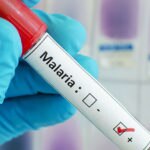Malaria, yellow fever… vaccinations you need if you go to the Americas
The Americas receive more tourists than anywhere else in the world. Nearly 191 million people decided to travel to there last year, according the World Tourism Organization. This represented a 5% increase in international tourism, mainly boosted by the appreciation of the dollar. But before you head for the Americas, it’s important to keep in mind a few health tips.

Only Canada, Cuba, the U.S. and Dominican Republic are excluded from any type of vaccination – recommended or required. For all other countries, it’s a good idea to go to one of the International Vaccination Centers for a personalized diagnosis based on your destination, the length of the trip, the purpose and what you will be doing.
In most countries, big cities are low risk areas. Business trips that last less than a week are considered to have minimal health risks. However, it’s important to keep in mind certain issues related to yellow fever and malaria especially.

Yellow fever vaccination certificate is mandatory in 27 of the 35 countries in the Americas. - Shutterstock
What should you know about yellow fever?
Yellow fever is spread by infected mosquitos. This disease can be prevented by getting vaccinated at least 10 days prior to the trip. The vaccination lasts for 10 years, so no booster shots will be needed until this period is over.
Yellow fever vaccinations are mandatory in 27 of the 35 countries in the Americas, which require a vaccination certificate if you are coming from an infected area. Although Spain is not one of the countries where this disease is endemic, you should check with your doctor before traveling since yellow fever is present in 13 Latin American countries, according to the World Health Organization. This certificate is not required in Argentina, Canada, Chile (unless you are going to Easter Island), Costa Rica, Cuba, the U.S., Mexico and the Dominican Republic.
Yellow fever vaccinations are recommended if you are going to certain parts of Argentina, Bolivia, Colombia, Ecuador, Guyana, Panama, Paraguay, Peru, Suriname, Trinidad and Tobago and Venezuela. In all these places, the capital cities are exempt and the risk is generally low if you aren’t going to forest areas. In order to analyze the risk specific to each country, the Carlos III Hospital has an online search engine to allow travelers to look for recommended or required vaccinations.

Nearly 3.2 billion people are at risk of contracting malaria
Where is there risk of malaria?
Malaria is present in 95 countries and territories around the world. Nearly 3.2 billion people are at risk of contracting malaria, according to the World Health Organization. The risk is relatively high in the Americas, although again, it’s important to keep in mind the exact area of the country where you will be traveling, since risk is fairly low in big cities.
However, it’s a good idea to see a doctor for more detailed information if you will be going to certain regions of Argentina (only the border with Bolivia and Paraguay), Belize, Bolivia, Brazil, Colombia (especially jungle areas below 800 meters), Costa Rica, Ecuador, El Salvador (only in the Santa Ana and Ahuachapán provinces and the La Unión department), Guatemala, Guyana (especially in rural areas and the interior of the country), Haiti, Honduras, Mexico (only certain states), Nicaragua (except in the capital), Panama, Paraguay, Peru (only outside of the Andean area and Lima), Suriname and Venezuela (except in Caracas and Isla Margarita).
Chemoprophylaxis (the administration of chemical substances like antibiotics) is also recommended if you’re going to Belize, Bolivia, Brazil, Guyana, Haiti, Honduras, Nicaragua and Suriname. In other countries in the Americas this is only needed if you’re going to a specific at-risk area.